= Agave titanota FO-076 Sierra Mixteca, Oaxaca, Mexico.
Accepted Scientific Name: Agave titanota
Agaves Cont. N. Amer. 176 (1982).
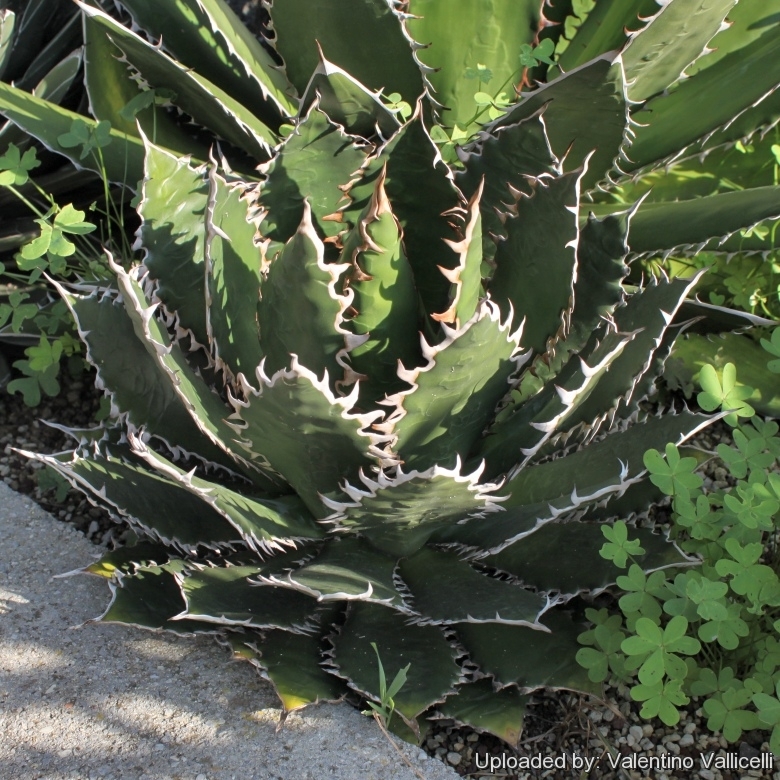
Agave horrida var. oteroi (Agave titanota FO-076 Sierra Mixteca, Oaxaca, Mexico.) Photo by: Valentino Vallicelli
This is a very interesting plant and quite different from the typical Agave titanota described by Gentryi.
It is one of the prettiest and most sought after Agaves. It forms deep grey-green rosettes with very thick leaves and large wicked-looking, parchment coloured lateral spines. Very handsome when big.
Origin and Habitat: Mexico (Oaxaca)
Habitat: Endemic to limestone hills.
Synonyms:
See all synonyms of Agave titanota
back
Accepted name in llifle Database:Agave titanota GentryAgaves Cont. N. Amer. 176 (1982).Synonymy: 6
back
Description: Agave titanotaSN|13314]]SN|573]] is a medium sized agave that is extremely robust looking and form a mostly solitary rosette with wide, open crown of few leaves, up to 75 cm in diameter.
There are two different looking forms of this plant, the typical Agave titanota defined by Gentry with ghostly white colored leaves gradually blend in habitat into the squatter round, greener form described by Felipe Otero (frequently sold as Agave sp. Sierra Mixteca FO-076 or Agave horrida var. oteroiSN|573]]SN|13314]]), however some blue plants are found isolated at the edge of the range of the green populations, with no green plants around.
Leaves: Wide alabaster-white (in the gentry form), deep grey-green or pale blue (in the Felipe Otero form) up to 60 cm long, 12 cm wide and are broader near the tip and narrower at the base. The margins of the leaves are lined with varying degrees of teeth from nearly toothless to broad papery wicked-looking, parchment coloured saw-tooth-like projections.
Subspecies, varieties, forms and cultivars of plants belonging to the Agave titanota group
 Agave titanota Gentry: It is an open plant with few ghostly white coloured leaves arranged in a typically solitary rosette. Diameter up to 75 cm. Origin:Rancho Tambor, Oaxaca, Mexico.
Agave titanota Gentry: It is an open plant with few ghostly white coloured leaves arranged in a typically solitary rosette. Diameter up to 75 cm. Origin:Rancho Tambor, Oaxaca, Mexico. Agave titanota f. aureomarginata hort.: has a paler creamy yellow band down the margins, with green centres
Agave titanota f. aureomarginata hort.: has a paler creamy yellow band down the margins, with green centres Agave titanota FO-076 Sierra Mixteca, Oaxaca, Mexico.: It is an open plant with few ghostly white coloured leaves arranged in a typically solitary rosette. Diameter up to 75 cm. Origin:Rancho Tambor, Oaxaca, Mexico.
Agave titanota FO-076 Sierra Mixteca, Oaxaca, Mexico.: It is an open plant with few ghostly white coloured leaves arranged in a typically solitary rosette. Diameter up to 75 cm. Origin:Rancho Tambor, Oaxaca, Mexico. Agave titanota Rio Salado, Oaxaca, Mexico: is a population with intermediate characteristic between the two previous forms. Distribution: Rio Salado, Oaxaca, Mexico
Agave titanota Rio Salado, Oaxaca, Mexico: is a population with intermediate characteristic between the two previous forms. Distribution: Rio Salado, Oaxaca, Mexico
Bibliography: Major references and further lectures
1) Howard Scott Gentry “Agaves of Continental North America” University of Arizona Press, 01/Feb/2004
2) Urs Eggli “Illustrated Handbook of Succulent Plants: Monocotyledons” Springer, 2001
3) Hermann Jacobsen ”A Handbook of Succulent Plants: Abromeitiella to Euphorbia” Blandford Press, 1960
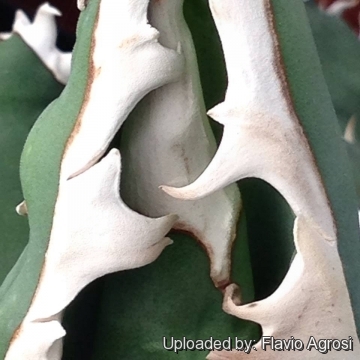 Agave horrida var. oteroi (Agave titanota FO-076 Sierra Mixteca, Oaxaca, Mexico.) Photo by: Flavio Agrosi
Agave horrida var. oteroi (Agave titanota FO-076 Sierra Mixteca, Oaxaca, Mexico.) Photo by: Flavio Agrosi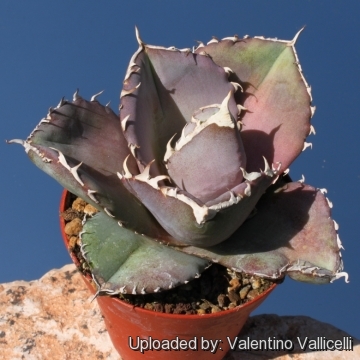 Agave horrida var. oteroi (Agave titanota FO-076 Sierra Mixteca, Oaxaca, Mexico.) Photo by: Valentino Vallicelli
Agave horrida var. oteroi (Agave titanota FO-076 Sierra Mixteca, Oaxaca, Mexico.) Photo by: Valentino Vallicelli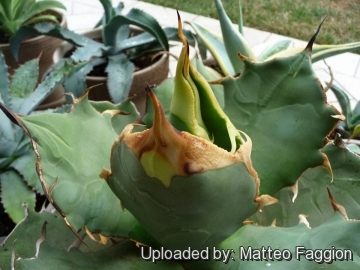 Agave horrida var. oteroi (Agave titanota FO-076 Sierra Mixteca, Oaxaca, Mexico.) Photo by: Matteo Faggion
Agave horrida var. oteroi (Agave titanota FO-076 Sierra Mixteca, Oaxaca, Mexico.) Photo by: Matteo Faggion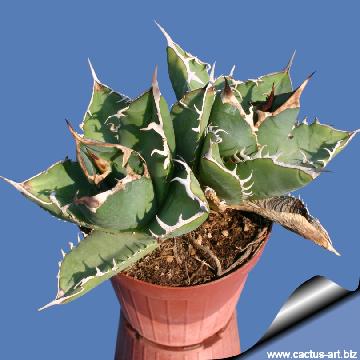 Agave horrida var. oteroi (Agave titanota FO-076 Sierra Mixteca, Oaxaca, Mexico.) Photo by: Cactus Art
Agave horrida var. oteroi (Agave titanota FO-076 Sierra Mixteca, Oaxaca, Mexico.) Photo by: Cactus Art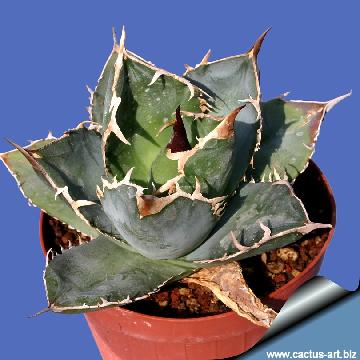 Agave horrida var. oteroi (Agave titanota FO-076 Sierra Mixteca, Oaxaca, Mexico.) Photo by: Cactus Art
Agave horrida var. oteroi (Agave titanota FO-076 Sierra Mixteca, Oaxaca, Mexico.) Photo by: Cactus Art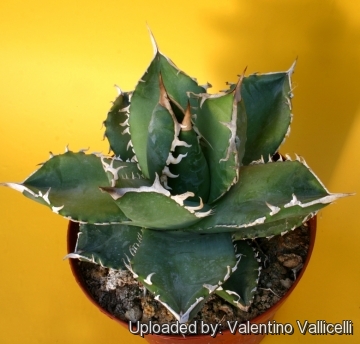 Agave horrida var. oteroi (Agave titanota FO-076 Sierra Mixteca, Oaxaca, Mexico.) Photo by: Valentino Vallicelli
Agave horrida var. oteroi (Agave titanota FO-076 Sierra Mixteca, Oaxaca, Mexico.) Photo by: Valentino Vallicelli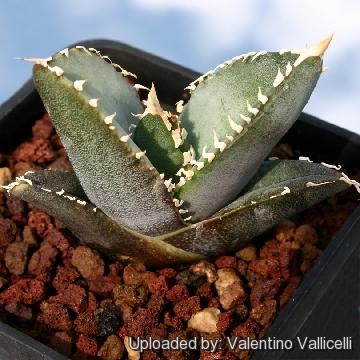 Agave titanota FO-076 Sierra Mixteca (Juvenile Specimen) (Agave titanota FO-076 Sierra Mixteca, Oaxaca, Mexico.) Photo by: Valentino Vallicelli
Agave titanota FO-076 Sierra Mixteca (Juvenile Specimen) (Agave titanota FO-076 Sierra Mixteca, Oaxaca, Mexico.) Photo by: Valentino Vallicelli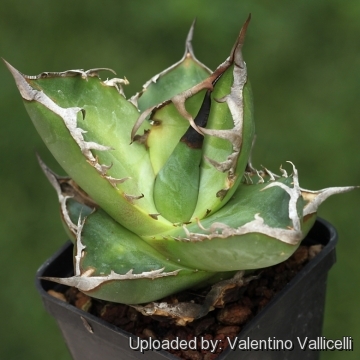 Agave horrida var. oteroi (Agave titanota FO-076 Sierra Mixteca, Oaxaca, Mexico.) Photo by: Valentino Vallicelli
Agave horrida var. oteroi (Agave titanota FO-076 Sierra Mixteca, Oaxaca, Mexico.) Photo by: Valentino VallicelliCultivation and Propagation: Agave titanotaSN|573]]SN|573]] is one of the most striking and sought-after species and is a relative easy-to-grow.
Growing rate: This form tends to be slowing than the standard white-grey species plant, hence the price.
Soil: It needs a very well-drained, soil.
Repotting: Use pot with good drainage.
Watering: Water regularly during the growing season from spring to autumn. In winter watering this plant can be done once every 1-2 months, there is no need to mist the leaves. Plants cultivated outdoors are drought tolerant and takes blasting heat and full sun.
Exposure: It do well in full sun or a lightly shaded area.
Feeding: During the beautiful season it’s good to enrich the soil using a fertilizer rich in potassium and phosphorous, but poor in nitrogen, because this chemical element doesn’t help the development of succulent plants, making them too soft and full of water.
Hardiness: Agave titanotaSN|573]]SN|573]] is hardy to -3° C, particularly when dry but it is best to avoid freezing temperatures.
Heat Tolerance: Excellent
Uses: Because of their symmetrical form these plants are very attractive when grown in pots, containers, rockeries and embankments. They are quite versatile. Plants can be grouped together or planted among boulders in a rock or cactus garden.
Propagation: Relatively easy to propagate by seeds or by suckers (if available). Sow at any time of year in a well-aerated compost at a temperatures of 22-24°C . Stand the pots in water, moisten thoroughly and drain. Scatter and press lightly the seed onto the top of the compost. But do not cover the small seeds with compost. Secure a polythene bag around the pot or cover the container with glass or and place in a warm shaded place. If possible, germinate in a propagator. Some seedlings may appear within a week or 10 days others will take longer. At lower temperatures, germination usually takes considerably longer. Once germination has taken place, remove gradually the glass or plastic and move into a good light but not in direct sun. If the young plants are exposed to too much sun, or the compost dries out, they may stop growing and often turn red; once they stop, it is often difficult to persuade them to start growing again. Never let the pots dry out-but don't saturate them either. A sodden compost is as harmful as a dry one.
Remove the basal suckers in spring or summer and let the cuttings dry for a few days before inserting in compost.
Your Photos

by Cactus Art

by Valentino Vallicelli
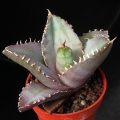
by Valentino Vallicelli





















